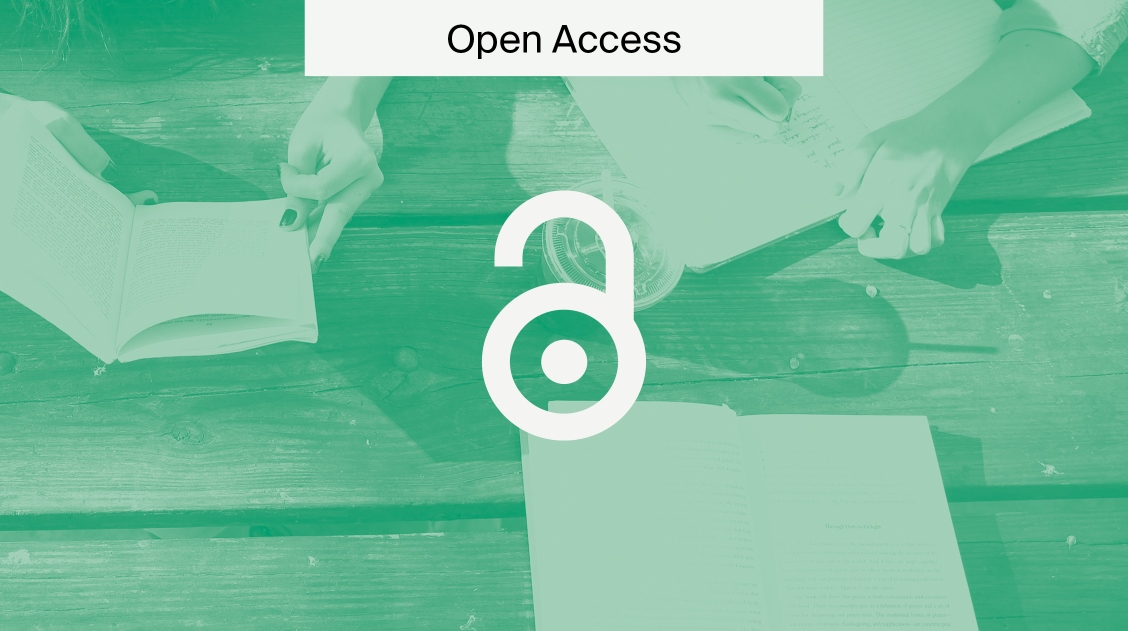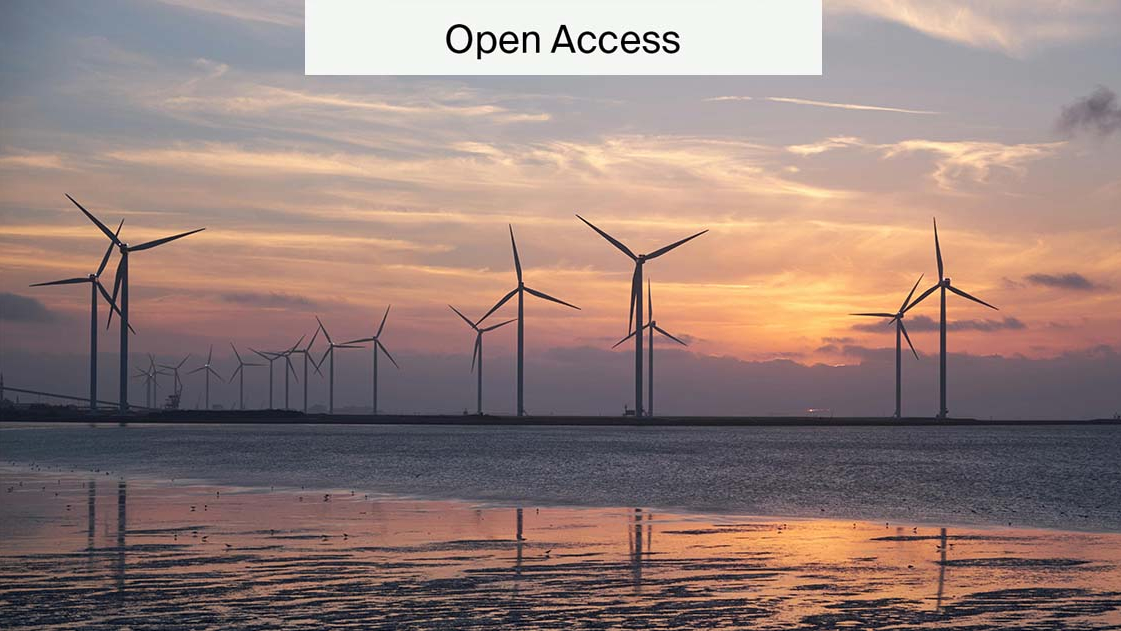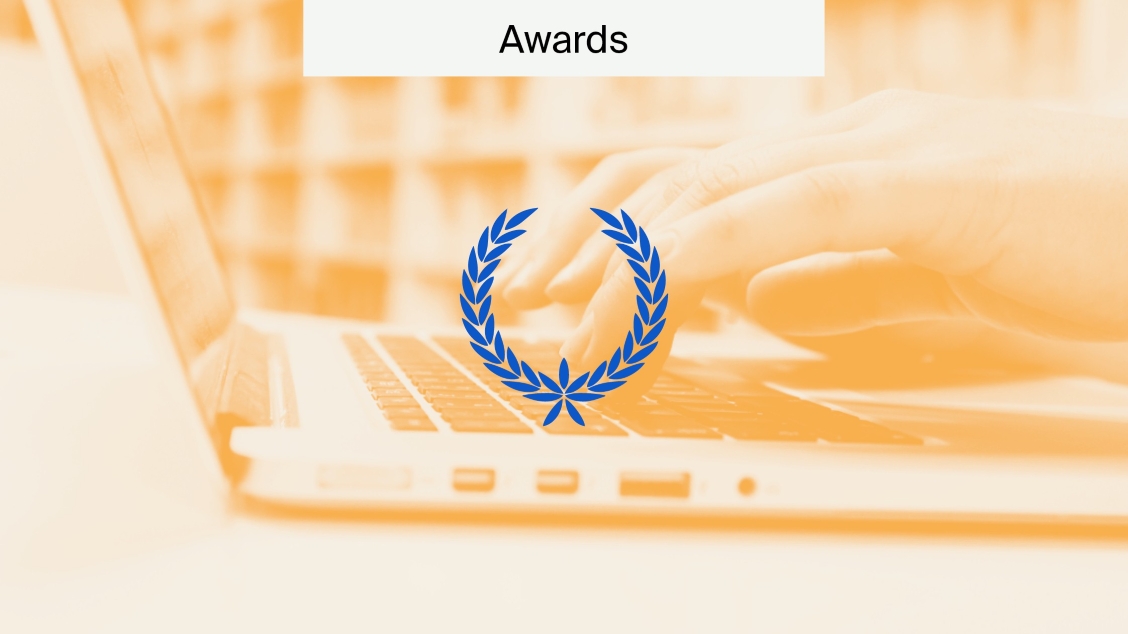
All You Need to Know About Open Access
Open Access is a rapidly developing area of scholarly publishing. In 2020, it surpassed subscription-based publishing globally. Also, since the 2000s, governments around the world have been implementing increasingly strict legislations requiring Open Access publication. We will provide you with all the information you need about Open Access and open science and how they work. Further, we will keep you updated with any changes and developments in the industry or national policy.
Definition of Open Access
Open Access (OA) is a model for publishing scholarly research that makes information, typically scholarly articles, immediately available to readers at no cost. The research is often free to reuse for scholarly purposes.
In short, some of the goals of OA are:
- Availability and reusability of scientific research for the public;
- Accessibility and transparency of scientific communication;
- Facilitating scientific collaboration;
- Transparency for the methodology, observation, and collection of data.
OA is becoming the dominant model for publishing scholarly work because of these benefits. Let’s delve deeper into the specifics of how Open Access works.
What is open science?
Open Access is part of open science, which is an umbrella term that advocates for making sure data, evaluation, and peer review are openly accessible, among other things. If Open Access aspires to make the results of the scientific process (articles) open, then open science seeks to open the entire research process.
Overall, open science aims to make scientific research transparent and more collaborative. As an umbrella term, advocates for open science approach it from many different aspects. We explore these diverse aspects below.
All you need to know about Open Access
We outline the range of topics that have been explored on the Blog with links to the full articles. We primarily focus on Open Access, also exploring topics that encompass open science.
Benefits of Open Access
Many researchers are choosing to publish their work in an Open Access format. Governments, funding agencies, and higher education institutions are also mandating Open Access to varying degrees. All this support led to Open Access surpassing subscription-based publishing in 2020.
In our article 6 Benefits of Open Access, we overview the main benefits that have led to this widespread support for and adoption of OA.
- Clarity around copyright and licensing ensure that readers know what they can do with work and that they are protected when reusing it.
- OA research receives more citations and from more diverse disciplines, institutions, and locations.
- 85% of the world’s population live in low-to-middle-income countries. OA ensures that vital information and cutting-edge insights are not limited to countries who can pay to access them
- OA allows people from outside of academia access research without spending large amounts of resources to access it.
- OA enables interdisciplinary research by allowing researchers to focus on common aims rather then be restricted to what’s in their fields.
- Many governments, funders, and higher education institutions are requiring OA publication. Satisfying their requirements for publication mean your research can receive the backing it needs.
Creative Commons licenses and Open Access copyright
Copyright plays a big role in Open Access publishing. After all, it’s the copyright holder who decides whether access is open or restricted.
Creative Commons (CC) licenses were created to fill the space between traditional copyright and the public domain. Creative Commons-licensed works can be copied, distributed, and elaborated on more easily, which is hugely beneficial to the production of knowledge. This is because they clearly define the rights of both the author and also the user accessing the material.
Simply, they let the author grant public permission to use their work under copyright law subject to the author’s preferred conditions. Also, from a reader’s perspective, they answer the question ‘What can I do with this work?’. Essentially, CC licences set the rules for the use of OA material.
In our article Open Access Copyright and Creative Commons Licenses, we outline the different variations of Creative Commons licenses and explore how they are applied in OA publishing.
Ethics in Open Access publishing
Ethics helps collectively determine the actions and values of members in the Open Access community as new challenges emerge, like AI and misinformation.
Key to the idea of ethics in Open Access is the community. Each individual and institution plays a role in maintaining the system through ethical values, including authors, reviewers, editors, and publishers.
The Committee on Publication Ethics (COPE) is one of the most recognized publication ethics organizations. COPE developed The Core Practices and Guidelines to advise publishers on how to set their individual policies and guidelines. MDPI adheres to COPE guidelines in their editorial processes.
Furthermore, at MDPI, the editorial office always performs detailed manual and automatic checks with the help of tools, prior to the peer review process to assess compliance with ethical standards.
As Open Access further solidifies as the normative form of scholarly publishing, all parties across academia must behave ethically and collaboratively to ensure these standards and values are retained.
Click here to learn more about Ethics in Open Access Scientific Publishing.
How open data empowers knowledge generation
In a world powered by data, open data provides equal access and reuse rights. Open data are data that can be freely used, reused, and redistributed by anyone, having only the requirement to attribute and share-alike.
For researchers, data restrictions can lead to inefficient resource use. Open data can empower researchers to leverage data to create deeper insights.
New digital technologies are being developed by utilizing the vast datasets that are available.For example, artificial intelligence (AI) tools like Large Language Models such as ChatGPT are trained using a huge volume of data to output text and images based on user prompts.
Another example of an emerging technology that is powered by data is digital twin. A digital twin is a virtual replica of a physical object, person, or process. They enable data-driven decision making, the monitoring of complex systems, product simulation, and management of an object’s entire life cycle.
Open data supports institutions in low-to-middle income countries or areas and those in early stages of their development. In sectors like healthcare and environmental maintenance, utilizing openly available data can save lives.
Data informs decisions, technologies, and future research. Open data creates equal access and reuse rights.
Learn more about How Open Data Empowers Knowledge Generation.
Leading female voices in Open Access publishing
For International Women’s Day (IWD) 2024, the focus was Inspire Inclusion. Having a diverse and inclusive community is key to achieving the aims of Open Access—removing all barriers to producing and accessing research.
Heather Joseph is the Executive Director of SPARC. She believes that “Open Access is not the end goal. It is an enabling strategy”. Open knowledge is her vision of an ecosystem where all research objects across the research lifecycle are made freely available. This would encourage more interaction through the process of research, rather than just after publication.
Eva Mendez is an expert in metadata and a Tenured Professor at the Universidad Carlos III de Madrid. In a 2023 book, she explains how OA and AI must evolve together to benefit science the most. Mendez urges that we actively preserve what underpins the scientific process: principles of honesty, trustworthiness, and transparency.
Finally, Marta Teperek is the programme leader for FAIR Data and is an advocate for data management and openness. she advocates for data champions—local advocates for good data management and sharing policies. These data champions can help share skills and create tailored data management workflows, specific to individual research groups.
In our article Leading Female Voices in Open Access Publishing, we explore the work and ideas of these three women in much more detail.
How MDPI supports scientific communities
Open Access Week 2023 focused on fostering a community mindset. We wanted to showcase the ways in which MDPI is dedicated to supporting scientific communities.
In short, the article outlines the specific ways MDPI achieves this:
- Offering waivers and discounts on article processing charges.
- Offering special discounts for societies affiliated with MDPI journals and institutions that are part of our Institutional Open Access Program.
- MDPI offers a range of awards to researchers, typically on a journal-by-journal basis.
- Special Issues are collections of papers centred around a subject of interest and are led by Guest Editors. Guest Editing provides a unique opportunity for scholars.
MDPI supports scientific communities by offering simple and flexible options for researchers. In our article, MDPI Supports Scientific Communities, we explore how in more detail.
Open Educational Resources
UNESCO defines open educational resources (OERs) as the following:
“Open Educational Resources are learning, teaching and research materials in any format and medium that reside in the public domain or are under copyright that have been released under an open license …”
Creative Commons licenses can be used to define the rights of the author and user of materials, enabling users to
- Retain.
- Revise.
- Remix.
- Reuse.
- Redistribute.
Open educational resources are growing in awareness and availability. They help improve access and create options for personalising education at a time when rising costs are impacting students.
Learn more about OERs in our article What Are Open Educational Resources?
Open Access mandates
Open Access mandates or policies are rules or requirements set by governments, funding agencies, or universities that require work be published in an Open Access format to varying degrees.
The differences in mandates revolve around three main factors:
- Who implements the mandate: this can be your employer if you work for a higher education institution or research body, the body that is funding the research, or even the government.
- When the work must be open: some mandates require immediate Open Access, whilst others contain embargos that allow the work to be published anywhere for a period (usually from 6 to 12 months) before being openly shared.
- Copyright clause: some mandates give authors rights retention, allowing them to publish wherever as long they deposit their work openly, whilst others require authors to give up their copyright to the publisher.
It’s important to adhere to the requirements of mandates, so authors must familiarise themselves with what policies there are whilst publishing research.
In our article What Are Open Access Mandates?, we cover how they work, why they are implemented, and highlight some of the major examples.
Open Access policies around the world
Open Access policies or mandates are rules or requirements set by governments, funding agencies, or institutions that require work to be published in an OA format.
How strict the requirements are can vary, with some suggesting and supporting OA publication and others requiring that all publications be published in a specific repository or journal. Also, different governments or institutions will have their own ways of achieving OA, via repositories or journals, for example.
Countries around the world are applying policies and mandates to varying degrees, often reflecting a government’s aims.
Our article Open Access Around the World outlines policies in various countries, including the USA, China, and the EU. It links to articles that explore each country’s policies in greater detail.
Open Access values and academia
The history of academic research is linked to technological advances in the pursuit of producing and disseminating knowledge internationally.
Academia’s history tends to be traced back to the ancient world, with Plato’s olive groves, the Library of Ashurbanipal, and the Library of Alexandria.
The printing revolution in the 15th century enabled the mass printing of texts. And later, in the 17th century, scientific journals were created, growing rapidly in the 19th century. Subscriptions to such journals became the basic model for scholarly communication until the mid-20th century.
However, the digital revolution created an opportunity to innovate. The Internet significantly reduced the costs of, increased access to, and sped up the publishing of academic research.
In our article, Open Access Values are Older Than You Think, we outline this history and also explain how the OA movement emerged to connect with academia’s ancient tradition of enabling the open spread of knowledge.
Open science monitoring and why we need it
UNESCO’s 2021 Recommendation on Open Science calls for increased open science monitoring. This is to ensure that open science is making research accessible to all and transparent.
Open science monitors are diverse infrastructures that measure the success and spread of open practices. They can monitor anything, including academic articles, data, software, and publishers.
Science operates in a global network featuring diverse groups and institutions. Therefore, it must be placed within this context of collaboration around the globe. Accordingly, UNESCO’s 2021 Recommendation suggests regularly monitoring across the research lifecycle using a range of approaches.
UNESCO cites three major reasons why we need monitors:
- We must ensure no one is left behind in science.
- The ‘streetlight’ effect, which refers to how indicators can draw attention and resources away from those who need it.
- Ensuring there are no major gaps in our awareness of the effects of openness.
Learn more in our article What Open Science Monitoring Is and Why We Need It.
Open science supports research assessment
Research assessment is essential to maintaining the quality and integrity of scientific publications. However, there are concerns about overreliance on metrics. Metrics equate the average citation frequency with the quality of the journal or articles in it. But there is no direct correlation between quality and the number of citations.
DORA aims to advance research assessment by challenging the use of journal-based metrics, amongst other things. MDPI signed DORA in 2018.
Open science can support research assessment by ensuring the diverse work scholars do is visible for evaluation. This highlights their work across the entire scientific process, not just the output. And it can enable the use of alternative metrics (Altmetrics) to provide a more holistic view of a researcher’s impact.
Learn more about how Open Science Supports Research Assessment.
Rising importance of preprints
A preprint is a version of a scholarly or scientific paper that is published before being submitted to a peer-reviewed journal. Publishing manuscripts in peer-reviewed journals often takes months or even years from the time of submission.
For many, the importance of preprints stems from how quickly they can be circulated and feedback can be received. However, the main disadvantage of preprints is the lack of peer review, which can lead to unverified information spreading.
As of 2025, the Bill and Melinda Gates Foundation will no longer support the payment of article processing charges, requiring its grantees to publish preprints of their work. This marks a significant change in policy for a major funder and may reflect similar upcoming changes in EU policy.
Preprints.org is MDPI’s own multidisciplinary repository that is dedicated to hosting early versions of scientific works.
Our article Rising Importance of Preprints for Open Access Funders, we define what preprints are, their pros and cons, changes in Open Access funders, and also introduce you to MDPI’s own preprints server.
Understanding and practicing FAIR data
The FAIR Guiding Principles for Data Management and Stewardship emphasize standardization and machine-readability to cope with the increase in volume, complexity, and creation speed of data. FAIR stands for
- Findability: Metadata and data should be easy to find by humans and computers.
- Accessible: The user needs to know how the data can be accessed.
- Interoperable: Data must be integrated with other data and applications for analysis, storage, and processing.
- Reusable: Data must be clearly described so they can be replicated or combined in different settings.
The goal of the FAIR Principles is to optimise the reuse of data.
Key points to focus on are ensuring your data have a persistent identifier, that your metadata are rich and accurately describe your data, and that your data are stored with a clearly defined reuse license.
Learn more in our article Understanding and Practicing FAIR data.
What are Open Access repositories?
According to OpenAIRE:
An Open Access repository is a database or a virtual archive established to collect, disseminate and preserve scientific output like scientific articles and datasets and make them freely available.
Depositing material in a repository is ‘self-archiving’ and it is known as the ‘green’ route to Open Access.
Repositories must be interoperable, which refers to the ability of different systems to work together, e.g., inter-operating, and mixing different datasets. Interoperability enables repositories to be harvested by search engines.
The benefits of repositories include:
- Maximize potential visibility, dissemination, and reuse.
- Increase access to research in low-to-middle income countries.
- Encourage the permanent archiving of research.
- Enable interdisciplinary research.
Repositories are an essential aspect of the open science mission: to increase the transparency of and open the entire research process for all.
The MDPI journal Data is an Open Access journal on data in science. Researchers who have deposited their data in an online repository can publish Data Descriptors. Data Descriptors describe data and how they were collected and processed. The original dataset is linked to in the article, enhancing the data’s visibility, reusability, and transparency.
Click here to learn more about What Are Open Access Repositories?
What is a data management and sharing plan?
Funding agencies, institutions, and publishers may ask you to create a data management and sharing plan to include in your research proposal.
A data management plan (DMP) is a document that outlines how you will deal with your data during and after your research. The goal of a DMP is to consider the unique and varied aspects of your data generation, preservation, and analysis to ensure that it is safe, accurate, and replicable.
DMPs boost efficiency by reducing the chance of errors and saving time, which can also increase replicability.
There is no definitive list of features that should be covered in a DMP. But funders are increasingly requesting details on how the data will be shared.
Support for open data is growing as part of the global open science movement to improve transparency, encourage collaboration, and boost innovation. Publications with open data may be read and cited more frequently. This is known as the ‘Open Data Citation Advantage’.
Learn more in our article What is a Data Management and Sharing Plan?
What is citizen science?
Citizen science is scientific work performed by ordinary people without any formal scientific training. It is recognised as a key part of open science by the EU and USA, as part of the broader movement towards ensuring all parts of science are openly and easily accessible.
Citizen science seeks to remove the barriers between scientists and ordinary people during the process of creating science.
At a time when misinformation is rife, especially around scientific issues, engaging citizens could help the public connect with scientists and increase their scientific literacy.
Furthermore, it could also remove this barrier for scientists, bringing them closer to the public, thus helping them communicate their findings directly.
Citizens can provide data that would otherwise be expensive, time-consuming, and resource-intensive to collect. At a basic level, the more people you have collecting data, the more data you’ll be able to collect, the more varied they’ll be, and the quicker you’ll be able to get them.
Learn more in our article What is Citizen Science?
What is open science infrastructure?
The UNESCO 2021 Recommendation on Open Science includes open infrastructure as one of the four pillars of open science.
An open infrastructure is a system or service that is necessary for something to run smoothly.
Examples include:
- Data repositories.
- Open Access journals.
- Preprint repositories.
They provide essential services that enable members of the scientific community to practice open science. Therefore, the systems or services are developed with specific open values in mind.
Some of the driving principles include the following:
- Transcending boundaries of disciplines, geography, and institutions.
- Community driven.
- Non-discriminatory participation.
- Transparent governance.
- Open source.
Open science infrastructures provide services that enable the scientific community to practice open science. If you want to learn more, see our article What is Open Science Infrastructure?
What is the Barcelona Declaration on Open Research Information?
Data in the form of analytics and indicators are growing increasingly important when measuring productivity and setting priorities in academia. The Barcelona Declaration on Open Research Information, released on 16 April 2024, recognises the rising importance of data and aims to ensure it’s open.
The Declaration homepage defines research information as metadata associated with the conduct and communication of research. These data are often stored in bibliographic databases, software archives, data repositories, and research information systems.
It is a community initiative that emerged from a workshop with over 25 experts interested in changing the research landscape. The Declaration revolves around four commitments:
- We will make openness the default for the research information we use and produce.
- We will work with services and systems that support and enable open research information.
- We will support the sustainability of infrastructures for open research information.
- We will support collective action to accelerate the transition to openness of research information.
In our article What is the Barcelona Declaration on Open Research Information?, we break down the specifics of the declaration, analyse its contents, and also outline its next steps.
What is the Budapest Open Access Initiative?
The Budapest Open Access Initiative (BOAI) marked the beginning of the OA movement. In 2002, its members coined and defined OA and outlined the principles of free accessibility and usability behind it.
Before 2002, almost all journals ran subscription-based models. Around the 1990s, prices began to rise much faster than inflation. This is known as the ‘serials crisis’.
The BOAI defines Open Access to literature as “free availability on the public internet”. It recommends self-archiving by depositing research in repositories or by publishing in fully OA scholarly journals.
The twentieth anniversary statement concluded: “OA is not an end in itself, but a means to other ends, above all, to the equity, equality, usability, and sustainability of research.”
In our article Looking Back at the Budapest Open Access Initiative, we explore the declaration. From this, we reflect on its development and the support it has received as OA continues to grow.
What is open research?
Open research is an umbrella term for a set of practices that is sometimes used interchangeably with open science.
Open Access refers to ensuring that the final product of the research process, normally an article or review, is published openly. This means there are no barriers to accessing the research, such as an access fee.
Open science extends this to the entire research process, ensuring openness the whole way. Open research is seen as more inclusive, as it extends into humanities and other disciplines.
Those who practice open research are dedicated to ensuring accessibility, transparency, verification, and reproducibility in scientific research. This involves opening research across its whole life cycle, not just the output.
Examples of open research practices include:
- Open Access publications.
- Preprints.
- Preregistration.
- Open data.
- Open peer review.
- Open source software and hardware.
- Citizen science
Learn more in our article What is Open Research?
What is visibility in Open Access publishing?
One of the most widely advertised benefits of publishing Open Access is increased visibility. Yet it’s not always clear what “visibility” means.
Essentially, the visibility of a piece of research (whether it’s an article or a book) is defined by the size of its audience, the extent of its reach, and any engagement the research generates.
Although there may be other factors involved, the visibility of a piece of research can be determined by looking at three key figures: its number of downloads, citations, and online mentions.
Visibility in OA publishing is largely optimized through online mentions. OA publishers tend to publicize their books via social media to disseminate research as widely as possible.
In our article Visibility in Open Access Publishing, we explore how these different forms of visibility work and specifically explore their utility for Open Access books.
Why open data is important
Open data is part of the broader open science movement. Advocates recognise that, in a world powered by data, it is valuable for them to be equally accessible.
Open data are data that can be freely used, reused, and redistributed by anyone, subject at most to the requirement to attribute and share-alike. Generally, open data must meet three criteria: accessibility; clear reuse and redistribution rights; and availability.
The FAIR Principles aim to optimise the reuse of data. They encourage researchers to ensure their data are Findable, Accessible, Interoperable, and Reusable. Interoperability refers to the ability of different systems to work together, i.e., inter-operating, and mixing different datasets.
The benefits of open data include improving transparency, encouraging collaboration, and boosting innovation. However, the challenges revolve around privacy and security and also how resource intensive running data repositories can be.
In our article Why Open Data is Important, we explore this topic in more detail and provide information about how you can publish your data openly.
Why submitting to an Open Access journal costs money
The answer to the question of “who pays for Open Access?” is related to the dissemination model. Traditionally, the costs involved in the publishing of articles was entirely based on the reader. Readers would have to pay for access to the content, usually via their institutions.
For OA journals, the author typically pays what is called an article processing charge. This helps to fund the journal’s editorial process.
There are several different options available to authors, including waivers, grants, subsidies, and sponsorships, that can help authors cover these costs. In addition, the costs involved in publication vary quite significantly, with some journals not charging anything.
In our article Why Does Open Access Cost Money?, we outline the costs of OA and how this differs between the various models of OA publishing.
Open Access and MDPI
MDPI is the largest Open Access publisher in the world and is leading the transition to open science.
We are committed to ensuring you stay up to date with information about Open Access. Therefore, we will be updating this post monthly with articles explaining how OA works and other topics in open science.











how do you disciriminate people to deserve vouncher of discount? At same department students one got %50 one got %100 one got nothing?
Hi,
Please visit this page for more information about APCs and vouchers: https://www.mdpi.com/apc#discounts_apc
As for the specific case you are describing, please contact the editorial office of who you published with and they will be able to clarify what occurred.
All the best.